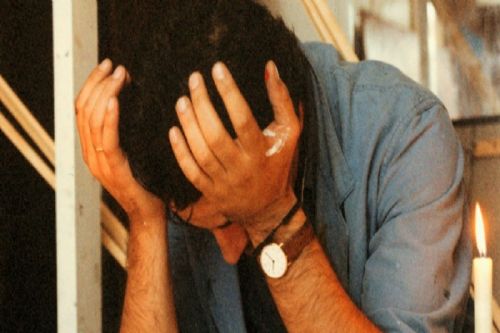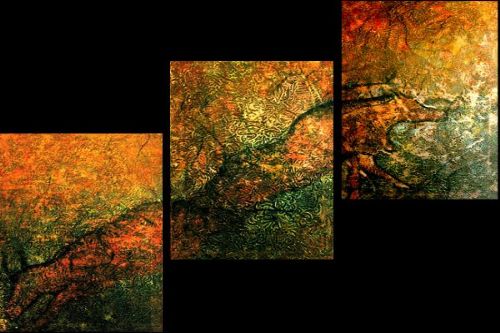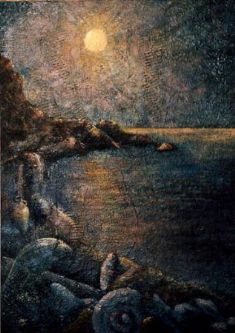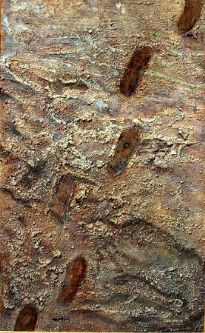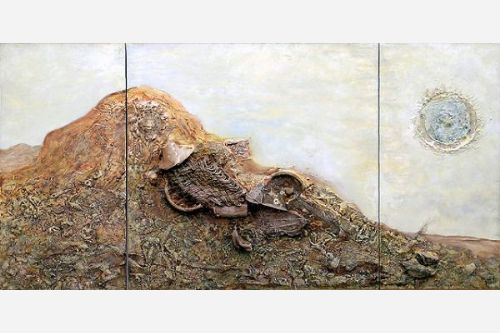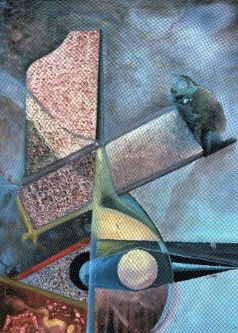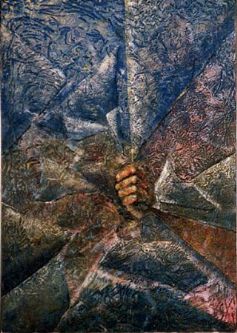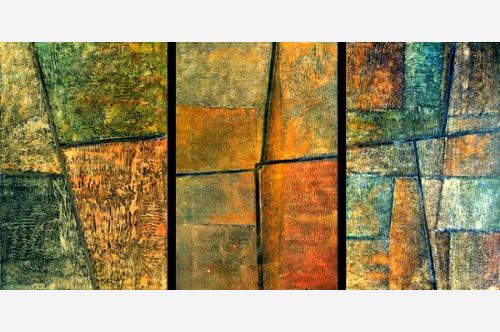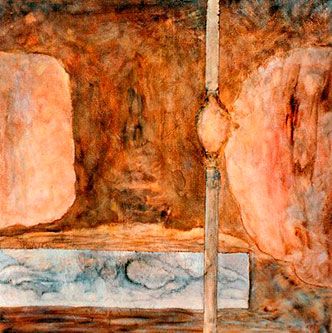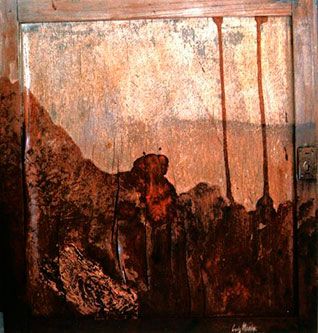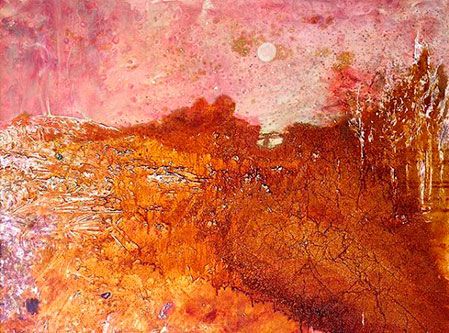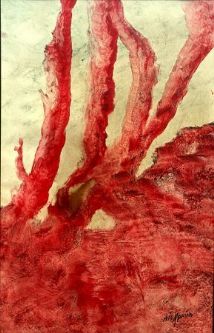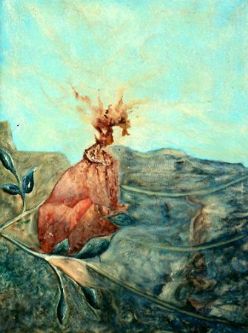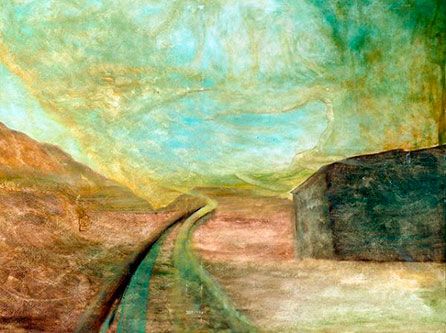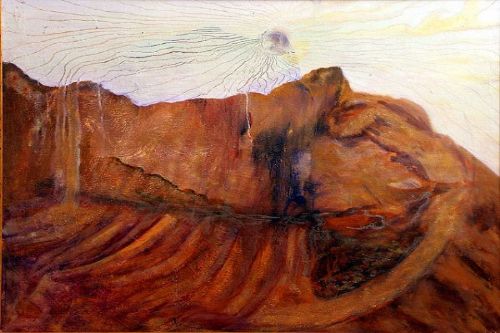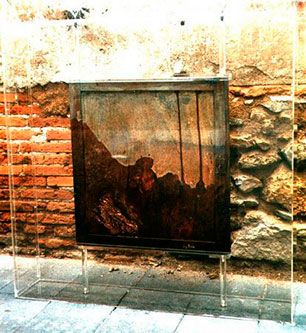
Timeless Almagra Group
ATEMPORAL SPACES
Colour sleeps under the influence of creative spaces, such as the abandoned mines of Mazarrón, where the search of mute and atemporal environments is prominent.
Agustín Laguna
SPAIN, ‘ALMAGRA’ GROUP
The return to Spain meant the creation of the ALMAGRA group, of which he was co-founder, with the coordination of the Director of the Universidad Popular de Mazarrón (Popular University of Mazarrón), José María López Ballesta, and twenty painters, most of them from the municipality.
From this period, we can emphasize the first rapprochement to the matter and to shared research with the painters Tomás Raja, Pedro Vivancos, Amando López y Jacinto Ors, among others.
The kid in the overcoat.
The kid in the overcoat visited us from flat roofs of NYC and he told stories. He painted butterflies in our eyes in the midst of champagne and smoke… While he made crosses of fire in works where no truth could be held, ashes flew steaming the white.
I observe the artist’s studio and how he registers his own art history attracts my attention. It’s written in sheets of paper spread on the wall, where he writes down the good decisions and the confusion about his works. This collection does not intend a retrospective but a meditation.
Luis Marino was one of the founding members of GALA (Group of Latin American Art), around 1985, when the German historian and art critic Peter Bloch, one of the mythical visionaries of that time, accepted him for that artistic trend.
He arrived with his paintings as his only CV, and he passed the test of post-modernism and of new abstract art in that melting pot of starting points of New York.
After his stay in America he suggested the idea of Almagra. It performed its first artistic expression with a historic exhibition in the San Andrés Church, in 1985. Inside, there were about a hundred paintings of fifteen painters.
Text: Agustín Laguna
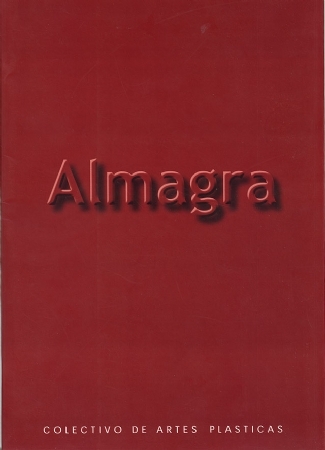
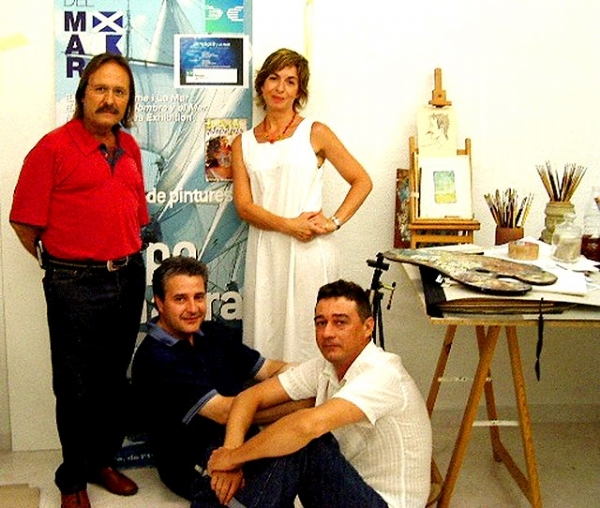
2004 ALMAGRA Plastic Arts Group, Tomás Raja, Isabel Guillermo, Luis Marino y Marcos Gómez in the study ‘la fábrica vieja’ (the old factory) in Mazarrón, where he created these works
